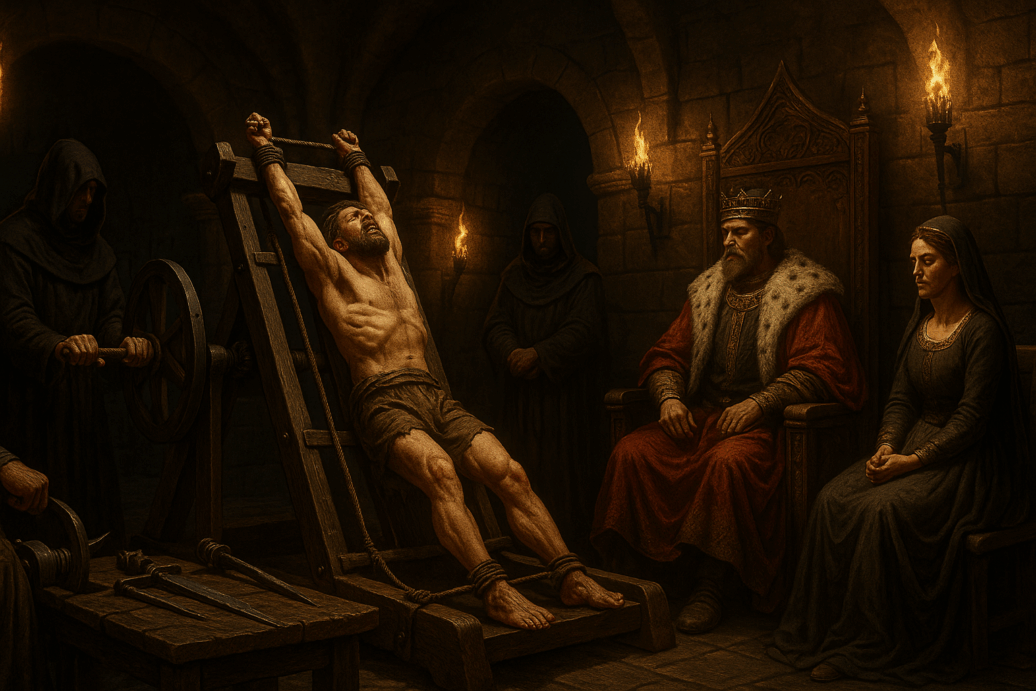Justice and Cruelty: A Medieval Dilemma
When we imagine medieval torture chambers, visions of dungeons, iron devices, and gruesome punishments fill our minds. But an important question lingers: did social class affect torture in the middle ages? Was there truly a divide between how the noble and the commoner suffered? The chilling relationship between torture and social status in medieval times unveils a brutal truth: while all lived under harsh laws, the wealthy often met different fates than the poor.
Noble Suffering: Privilege and Pain
Despite their titles and treasures, nobles were not entirely immune to pain. However, noble suffering often looked vastly different from the agony inflicted on peasants. While commoners might endure brutal public lashings or public execution, nobles often faced imprisonment in relatively comfortable conditions or private, “dignified” forms of sentencing.
At institutions like the Medieval Torture Museum in Chicago, visitors can explore the grim realities of torture across the social spectrum. Exhibits vividly illustrate the privilege and punishment in medieval society, where even suffering was divided by class.
Torture Methods for Wealthy Prisoners
When wealthy individuals found themselves in trouble, torture methods for wealthy prisoners were often designed to preserve their bodies and status. Techniques focused more on psychological oppression and threats rather than visible mutilation. Nobles might endure sleep deprivation, isolation, or refined versions of devices designed to extract confessions without permanent disfigurement.
Meanwhile, peasants faced grotesque torture chambers for the wealthy to observe-places where the suffering of the poor reinforced the dominance of the upper classes.
Medieval Law and Social Hierarchy
The role of medieval law and social hierarchy cannot be overstated. The hierarchy was woven into every facet of life, dictating not just daily customs but also how justice was administered. Laws often ensured harsher punishments for the lower classes, while aristocrats manipulated loopholes to secure more merciful outcomes.
The Medieval Torture Museum in LA captures this dynamic perfectly, showcasing how aristocracy and medieval torture evolved to balance the need for discipline with the preservation of noble dignity.
Were Nobles Tortured Differently?
Were nobles tortured differently? The answer lies somewhere between tradition and practicality. While physical brutality was common for commoners, nobles often faced more subtle punishments designed to protect family reputations and preserve dynastic power. Dynasty survival often mattered more than immediate justice.
However, nobles accused of treason could not always escape gruesome fates. Accusations of betrayal frequently led to harsher, public forms of punishment intended to serve as a warning.
Medieval Punishment for the Rich
Medieval punishment for the rich often reflected a calculated balance between retribution and maintaining the aristocratic image. Public scandals involving noble prisoners were rare but devastating. Trials were dramatic affairs, mixing customs of honor with terrifying forms of punishment, especially when high-profile figures were implicated in plots or rebellion.
In some cases, nobles sentenced to death were offered a “nobler” form of execution-beheading rather than the rack or burning-to preserve some semblance of honor in death.
Inequality Etched in Stone
Despite rare exceptions, inequality remained embedded in medieval legal traditions. Disparity in torture methods and outcomes highlighted the systemic injustices of the time. Nobles benefited from their social status even when facing charges of infamy or rebellion, a stark reminder of the limited nature of medieval fairness.
For those searching for St. Augustine things to do, the Medieval Torture Museum offers a unique look into how privilege influenced medieval punishment. The exhibits reveal how wealth could either shield individuals from suffering or expose them to even harsher consequences.
In the end, torture was not merely a tool of punishment-it was a brutal reinforcement of dominance, a terrifying demonstration of where one stood within the social hierarchy. And sometimes, no amount of wealth or title could shield a noble from the cold iron of medieval justice.






